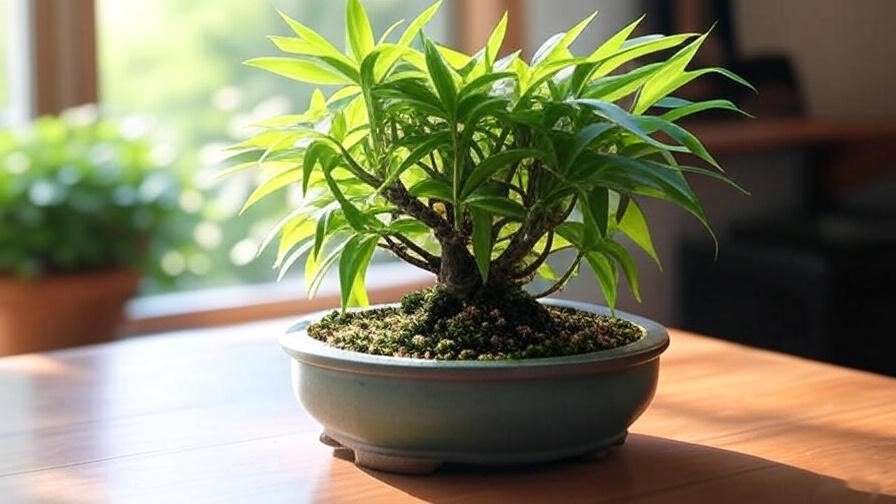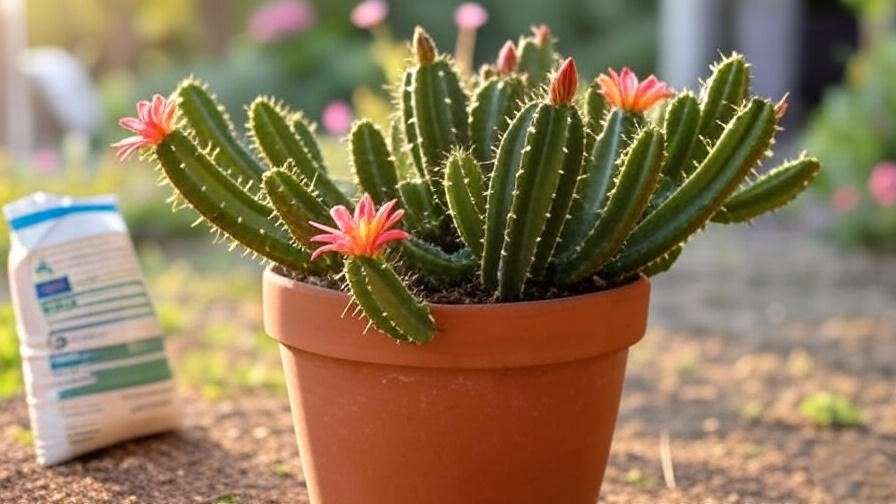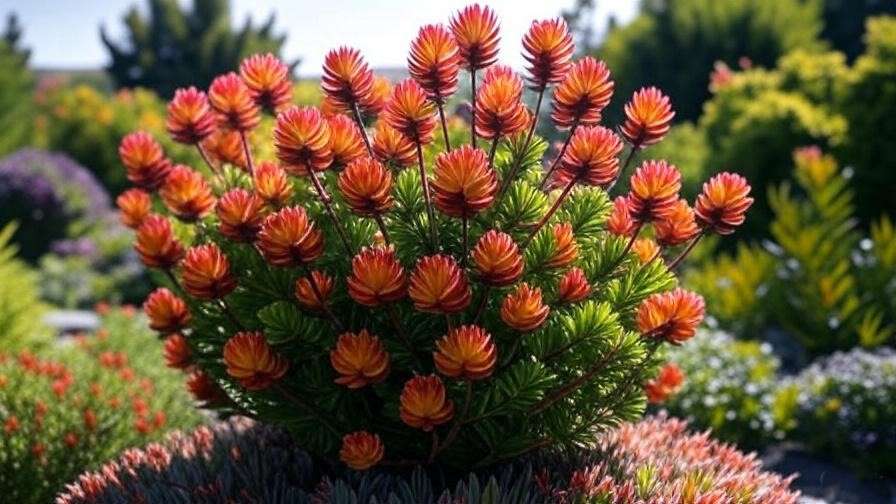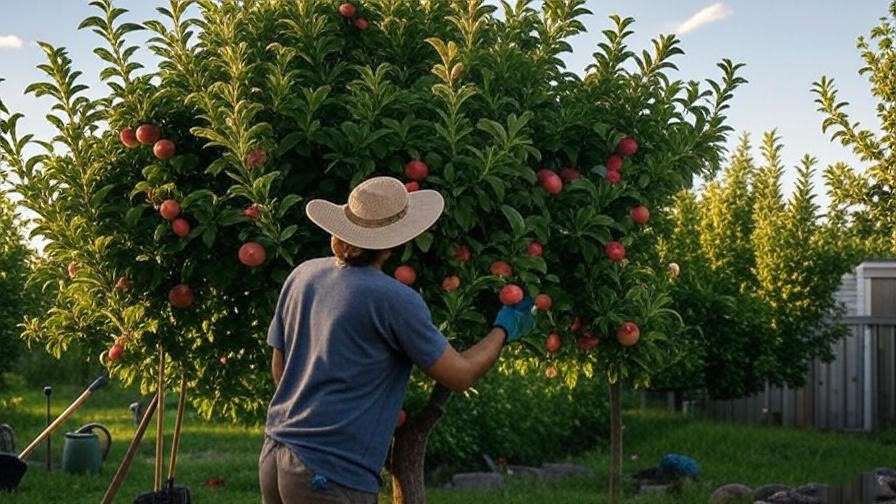Imagine harvesting baskets full of nutrient-rich, organic lentils from your own fields or garden, knowing they’re free from synthetic chemicals and bursting with flavor. As demand for sustainable, healthy foods skyrockets, mastering the art of growing organic lentils has become a must for farmers and home gardeners alike. Whether you’re battling inconsistent yields, pest pressures, or simply unsure how to start, this guide unveils five expert-backed secrets to transform your lentil crops into a thriving success. From soil health to harvesting techniques, we’ll walk you through proven organic farming strategies that deliver maximum yield and quality, all while staying true to sustainable principles.
Organic lentils aren’t just a crop—they’re a powerhouse of nutrition and a cornerstone of eco-friendly agriculture. Packed with protein, fiber, and essential micronutrients, they’re a staple in kitchens worldwide. Plus, their ability to enrich soil makes them a favorite among organic growers. But growing them successfully requires more than just planting seeds. In this article, we draw on decades of agricultural expertise, insights from leading organic farming institutions, and real-world success stories to share actionable tips that solve common challenges. Get ready to unlock the secrets to cultivating organic lentils that stand out in quality and quantity.
Why Grow Organic Lentils?
Nutritional and Environmental Benefits
Organic lentils are a nutritional goldmine, offering high levels of plant-based protein (up to 25% per serving), fiber, iron, and folate. Unlike conventionally grown lentils, organic varieties are cultivated without synthetic pesticides or fertilizers, ensuring they’re safer for both consumers and the environment. According to the USDA, organic farming practices enhance soil biodiversity and reduce chemical runoff, protecting local ecosystems. Lentils are also nitrogen-fixing legumes, meaning they naturally enrich soil by converting atmospheric nitrogen into a form plants can use. This reduces the need for external fertilizers, making organic lentil farming a sustainable choice for long-term soil health.
Beyond nutrition, lentils require less water than many other crops, making them ideal for regions prone to drought. A 2023 study by the Rodale Institute found that organic legume systems, including lentils, can improve soil organic matter by up to 15% over five years. This not only boosts crop resilience but also sequesters carbon, contributing to climate change mitigation. For growers, this means organic lentils are both a profitable crop and a step toward environmental stewardship.
Market Demand and Profit Potential
The global organic food market is booming, with a projected value of $532 billion by 2027, according to Statista. Organic lentils, in particular, are seeing surging demand as consumers prioritize clean, sustainable foods. Restaurants, health food stores, and grocery chains are willing to pay premium prices—often 20–30% higher than for conventional lentils—for certified organic products. For example, a small-scale organic lentil farmer in Montana reported doubling their revenue by transitioning to organic methods and selling directly to local co-ops.
This growing market offers opportunities for both large-scale farmers and small-scale growers. By tapping into community-supported agriculture (CSA) programs or farmers’ markets, you can connect directly with consumers who value organic, locally grown lentils. The key is ensuring your crop meets organic certification standards, which we’ll cover later in this guide.
Selecting the Right Lentil Varieties for Organic Farming

Understanding Lentil Types
Choosing the right lentil variety is the foundation of a successful organic crop. Lentils come in several types, each suited to specific climates and culinary uses. Green lentils, with their earthy flavor, thrive in cooler climates and are ideal for salads. Red lentils, quick-cooking and sweet, perform well in warmer regions and are perfect for soups. Black (Beluga) lentils, prized for their rich texture, suit temperate zones, while French (Puy) lentils offer a peppery taste and hold their shape in gourmet dishes. For organic systems, select varieties that match your local soil and climate conditions to minimize stress on plants.
For example, in the Pacific Northwest, varieties like ‘Richlea’ green lentils excel due to their tolerance for moist conditions, while ‘Crimson’ red lentils are better suited to arid regions like the Midwest. Consult your local agricultural extension service to identify varieties with proven performance in your area.
Choosing Certified Organic Seeds
Organic farming starts with organic seeds. Using certified organic, non-GMO seeds ensures compliance with organic standards and reduces the risk of chemical residues. Look for suppliers accredited by organizations like the Organic Seed Alliance or regional seed banks. These seeds are bred for organic systems, meaning they’re more resilient to pests and diseases without synthetic inputs. For instance, ‘Eston’ green lentils are a popular choice for organic growers due to their disease resistance and high yield potential.
Expert Insight: Dr. Sarah Thompson, an agronomist with 20 years of experience in organic legume cultivation, emphasizes, “Investing in high-quality, certified organic seeds is non-negotiable. They’re the starting point for a crop that meets market standards and performs well under organic management.”
Optimizing Soil Health for Organic Lentils

Soil Preparation and Testing
Healthy soil is the backbone of organic lentil farming. Lentils thrive in well-drained, loamy soils with a pH of 6.0–7.5. Before planting, conduct a soil test to assess nutrient levels, pH, and organic matter content. Affordable testing kits are available through university extension services or private labs. Results will guide you in addressing deficiencies, such as low nitrogen or phosphorus, which are critical for lentil growth.
To prepare soil, remove debris and till lightly to avoid disrupting beneficial microbes. Incorporate organic matter like compost or aged manure to improve soil structure and water retention. A 2022 study by the University of California found that organic soils with 3–5% organic matter content increased lentil yields by up to 20% compared to depleted soils.
Natural Soil Amendments
Organic lentils rely on natural fertilizers to meet nutrient demands. Composted manure, rich in nitrogen and micronutrients, is an excellent choice. Apply 2–3 tons per acre, depending on soil test results. Green cover crops, such as clover or vetch, can be planted in the off-season to fix nitrogen and suppress weeds. Rotate lentils with crops like wheat or barley to prevent nutrient depletion and break pest cycles.
Step-by-Step Soil Preparation:
- Test soil 2–3 months before planting.
- Adjust pH with lime (if too acidic) or sulfur (if too alkaline).
- Apply organic amendments 4–6 weeks before planting.
- Till amendments into the top 6–8 inches of soil.
- Allow soil to settle for 1–2 weeks before seeding.
Expert Tip
Inoculating lentil seeds with rhizobia bacteria enhances nitrogen fixation, boosting yields. Additionally, incorporating mycorrhizal fungi into the soil can improve root systems’ ability to absorb water and nutrients, especially in drought-prone areas. Products like MycoApply are widely available and approved for organic use.
Mastering Organic Pest and Weed Management

Preventing Pests Naturally
Pests like aphids, weevils, and cutworms can threaten organic lentil crops. Instead of chemical pesticides, use natural controls. Neem oil, applied early in the season, deters aphids effectively. Introducing beneficial insects, such as ladybugs or parasitic wasps, can keep pest populations in check. Companion planting with marigolds or garlic repels pests due to their strong odors. For example, a 2021 trial by the Organic Farming Research Foundation found that interplanting lentils with marigolds reduced aphid damage by 30%.
Monitor fields weekly for signs of pest activity, such as yellowing leaves or chewed pods. Early intervention is key to preventing outbreaks.
Weed Control Without Chemicals
Weeds compete with lentils for nutrients, water, and sunlight. Organic weed management relies on prevention and mechanical control. Apply organic mulch, like straw or wood chips, to suppress weed growth. Hand-weeding is effective for small plots, while larger farms can use shallow tillage before lentil emergence. Timing is critical—weed early, before lentils reach the 4-leaf stage, to avoid stunting their growth.
Cover crops, such as rye or clover, planted in the off-season, can smother weeds and improve soil health. A case study from a Saskatchewan organic farm showed that using rye cover crops reduced weed pressure by 40% in subsequent lentil crops.
Case Study
In 2023, Green Valley Organics in Idaho transformed their lentil yields by integrating companion planting and biological controls. By planting marigolds alongside lentils and releasing ladybugs, they reduced aphid infestations by 50% without chemicals. Their success highlights the power of natural pest management in organic systems.
Perfecting Planting and Watering Techniques

Timing and Planting Methods
Timing is critical when planting organic lentils to ensure optimal germination and growth. Lentils are cool-season crops that thrive in temperatures between 60–75°F (15–24°C). In temperate regions, plant in early spring (March to April) when soil temperatures reach at least 40°F (4°C). In warmer climates, late fall or early winter planting may be ideal to avoid excessive heat during flowering. Consult your local agricultural extension service for precise planting windows based on your region’s climate.
For planting, use a seed depth of 1–2 inches (2.5–5 cm) and space seeds 1–2 inches apart in rows 12–18 inches wide. This spacing promotes air circulation, reducing disease risk, and allows roots to access nutrients efficiently. For small-scale gardens, broadcast seeding followed by light raking can work, but row planting is preferred for larger fields to simplify weeding and harvesting. A 2022 study from the University of Saskatchewan found that precise row spacing increased organic lentil yields by 10–15% compared to random planting.
Step-by-Step Planting Guide:
- Prepare soil as outlined in Secret 2, ensuring it’s loose and well-drained.
- Inoculate seeds with rhizobia bacteria to enhance nitrogen fixation.
- Use a seeder or hand-plant seeds at the recommended depth and spacing.
- Cover lightly with soil and press gently to ensure seed-soil contact.
- Water immediately after planting to initiate germination.
Watering Wisely
Organic lentils are relatively drought-tolerant but require consistent moisture during key growth stages: germination, flowering, and pod development. Overwatering can lead to root rot, while under-watering stresses plants and reduces yields. Aim for 10–15 inches of water over the growing season, depending on rainfall and soil type. Drip irrigation is ideal for organic systems, as it delivers water directly to roots, minimizing waste and weed growth. Rainwater harvesting systems can further align with sustainable practices, reducing reliance on external water sources.
During germination, keep soil evenly moist but not waterlogged. Once plants establish (2–3 weeks), reduce watering to every 5–7 days, depending on weather. During flowering and pod formation, increase watering slightly to support seed development. A simple way to check soil moisture is to dig 4–6 inches deep; if the soil feels dry, it’s time to water.
Watering Needs by Growth Stage:
| Growth Stage | Watering Frequency | Notes |
|---|---|---|
| Germination | Daily or as needed | Keep soil moist but not soggy. |
| Vegetative Growth | Every 5–7 days | Reduce frequency in rainy conditions. |
| Flowering | Every 4–5 days | Ensure consistent moisture for pod set. |
| Pod Development | Every 5–7 days | Avoid water stress to maximize seed size. |
Expert Insight: The Cornell University Extension Service recommends monitoring soil moisture with a tensiometer for precision irrigation. “Lentils are sensitive to water stress during flowering,” says Dr. Maria Lopez, a legume specialist. “Organic growers should prioritize efficient systems like drip irrigation to maintain yields without compromising soil health.”
Harvesting and Post-Harvest Handling for Quality

Knowing When to Harvest
Timing the harvest is crucial for organic lentils to ensure peak quality and yield. Lentils are ready when most pods (70–80%) turn yellow or brown and feel dry to the touch, typically 90–120 days after planting. Seeds should be firm and rattle slightly inside pods. Harvest too early, and seeds may be immature; too late, and pods may shatter, leading to losses. Test a few pods by hand to confirm readiness before harvesting the entire crop.
For small-scale growers, hand-harvesting allows precise control. Cut plants at the base and bundle them for drying. For larger operations, mechanical harvesters can be used, but adjust settings to minimize seed damage. A 2023 report from the Organic Farming Research Foundation noted that timely harvesting increased marketable yield by up to 20% in organic lentil fields.
Proper Storage and Processing
Post-harvest handling is critical to preserve the quality of organic lentils. After harvesting, dry plants in a well-ventilated area for 7–10 days until moisture content drops to 12–14%. Thresh pods to separate seeds, either manually or with a small-scale thresher. Clean seeds to remove debris, using screens or air blowers approved for organic processing.
Store lentils in airtight containers in a cool, dry place (below 60°F/15°C) to prevent mold and insect damage. For commercial growers, consider eco-friendly packaging like biodegradable bags to appeal to organic consumers. Regularly inspect stored lentils for signs of weevils or moisture buildup, and use natural pest repellents like diatomaceous earth if needed.
Troubleshooting Common Harvest Issues:
- Pod Shattering: Harvest earlier in the morning when pods are slightly damp from dew to reduce splitting.
- Uneven Ripening: Plant uniform varieties and ensure consistent watering to synchronize pod maturity.
- Mold During Drying: Spread plants thinly and ensure good airflow during drying to prevent fungal growth.
Bonus Tips for Scaling Your Organic Lentil Farm

For growers looking to expand, consider advanced organic techniques to boost productivity. Intercropping lentils with crops like oats or flax can maximize land use and deter pests. For example, a 2024 trial in Manitoba showed that intercropping lentils with oats increased total yield per acre by 25% while reducing weed pressure.
Obtaining organic certification, such as USDA Organic or EU Organic, opens doors to premium markets. The process involves documenting your practices, avoiding prohibited substances, and passing inspections. Contact your local certifying agency for guidance. Additionally, connect with local markets, cooperatives, or CSA programs to sell directly to consumers. Building relationships with buyers, like restaurants or health food stores, can secure consistent demand for your organic lentils.
Common Mistakes to Avoid When Growing Organic Lentils

To ensure success, steer clear of these common pitfalls:
- Poor Seed Selection: Using non-certified or low-quality seeds can lead to weak plants and low yields. Always source organic, disease-resistant varieties.
- Neglecting Soil Health: Skipping soil tests or amendments risks nutrient deficiencies. Test and enrich soil annually.
- Overwatering: Excessive irrigation causes root rot and fungal diseases. Monitor soil moisture closely.
- Ignoring Pests Early: Delaying pest control allows infestations to spread. Inspect crops weekly and act promptly.
- Late Harvesting: Waiting too long risks pod shattering and yield losses. Harvest when 70–80% of pods are dry.
- Improper Storage: Storing lentils in humid conditions invites mold and pests. Use airtight containers in cool, dry areas.
- Skipping Crop Rotation: Planting lentils in the same field repeatedly depletes soil and increases disease risk. Rotate with cereals or cover crops.
These mistakes, often cited in agricultural journals like the Journal of Sustainable Agriculture, can be avoided with careful planning and adherence to organic principles.
FAQs About Growing Organic Lentils
How long does it take to grow organic lentils?
Most lentil varieties mature in 90–120 days, depending on climate and variety. Early planting and proper care can shorten this timeline, while water stress or poor soil may extend it.
Can organic lentils be grown in small spaces or containers?
Yes! Dwarf varieties like ‘Petite Crimson’ are ideal for containers or small gardens. Use pots at least 12 inches deep with well-drained, organic soil. Ensure 6–8 hours of sunlight daily.
What are the best companion plants for organic lentils?
Marigolds, garlic, and onions deter pests like aphids. Cover crops like clover or vetch enhance soil fertility when planted in rotation.
How do I know if my soil is suitable for organic lentils?
Test for pH (6.0–7.5), organic matter (3–5%), and nutrient levels. Amend with compost or cover crops if deficiencies are detected.
Are organic lentils more profitable than conventional lentils?
Organic lentils often fetch 20–30% higher prices due to consumer demand. A 2023 Organic Trade Association report noted that organic legumes have a growing market share, making them a lucrative choice.
Conclusion
Growing organic lentils is both a rewarding and sustainable endeavor, offering nutritional, environmental, and economic benefits. By selecting the right varieties, optimizing soil health, managing pests naturally, perfecting planting and watering, and harvesting with care, you can achieve exceptional yields and quality. These five secrets, backed by decades of agricultural research and real-world success, provide a roadmap for overcoming common challenges and thriving in organic farming.
Start implementing these strategies today to transform your lentil crops. Share your experiences in the comments, subscribe for more agricultural tips, or explore our related guides on organic soil management and crop rotation. With dedication and expertise, your organic lentil farm can become a model of sustainability and profitability.













